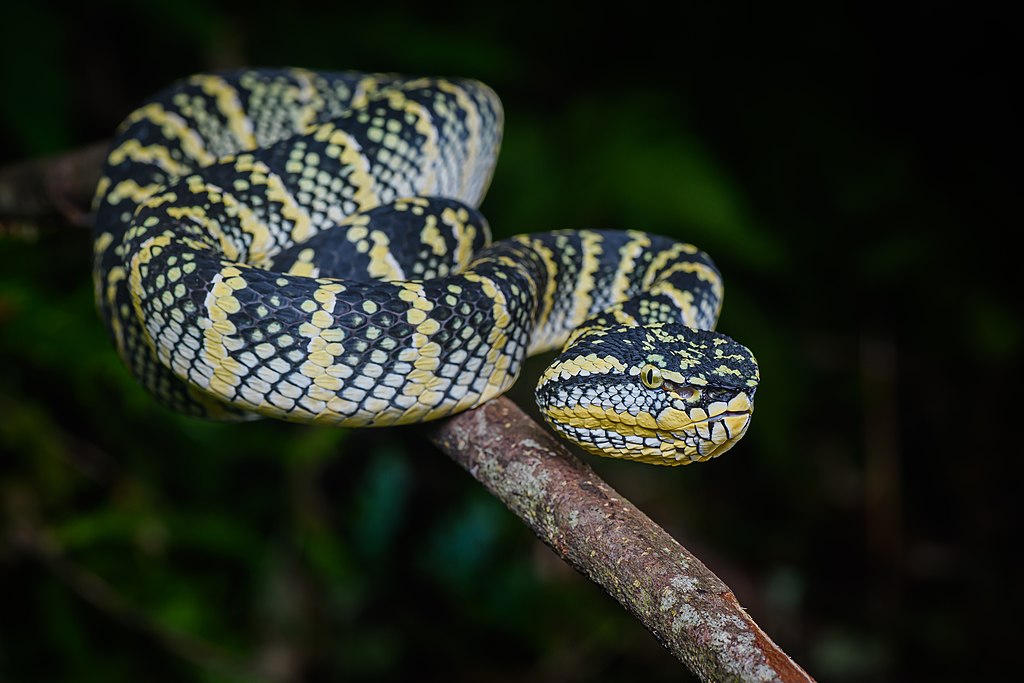Search This Blog
Pit Vipers The Optimal Blend of Style & Performance. Pit Vipers Outdoor Fashion and Lifestyle.
Featured
- Get link
- X
- Other Apps
Temple Pit Viper - Tropidolaemus Wagleri
 |
| Temple Pit Viper |
| Kingdom | Animalia |
| Phylum | Chordata |
| Subphylum | Vertebrata |
| Class | Reptilia |
| Order | Squamata |
| Suborder | Serpentes |
| Family | Viperidae |
| Subfamily | Crotalinae |
| Genus | Tropidolaemus |
| Species | T. wagleri |
| Scientific Name | Tropidolaemus wagleri |
Other Names
Wagler’s pit viper, bamboo snake, temple snake, speckled pit viper
Description
Temple Pit Viper is sexually dimorphic: the females grow to approximately 1 m (39 1⁄4 in) in total length (including tail), while males typically do not exceed 75 cm (29 1⁄2 in). It has a large triangular-shaped head, with a relatively thin body. It is almost entirely arboreal, and the tail is prehensile to aid in climbing.
It is found in a wide variety of colors and patterns, often referred to as "phases". In the past, some researchers classified the different phases as subspecies. The phases vary greatly from having a black or brown coloration as a base, with orange and yellow banding, to others having a light green as the base color, with yellow or orange banding, and many variations therein.
Geographic range
A green phase of Temple Pit Viper in a terrarium of Reptile Park, Taman Mini Indonesia Indah, Jakarta, Indonesia.
Temple Pit Viper is found in southern Vietnam from the provinces of Minh Hai and Song Be, in southern Thailand recorded from the provinces of Phang Nga, Phuket, Pattani, Surat Thani, Nakhon Si Tammarat, Narathiwat, and Yala, probably distributed throughout the Peninsula in west Malaysia, as well as the island of Penang, in Singapore and in Indonesia on Sumatra, the islands of the Riau Archipelago, Bangka, Billiton, Nias, the Mentawai Islands (Siberut), Natuna, and Karimata.[8] "In a revision by Vogel et al. (2007) the Tropidolaemus wagleri species complex was differentiated into several taxa, including the resurrection of T. subannulatus. The Western Philippine populations belong to T. subannulatus, but those from Mindanao include snakes assigned to both this species and T. philippensis. Tropidolaemus subannulatus has a wide distribution in Central Indonesia, Malaysia and Philippines, T[ropidolaemus] wagleri is restricted to mainland Southeast Asia, down to Sumatra and Bangka, West Indonesia."
Habitat
Lowland primary forest, secondary forest and jungle – especially coastal mangrove
Diet
Rodents, birds, and lizards
Venom Fact
Venomous
IUCN Conservation Status
Least Concern
- Get link
- X
- Other Apps
Popular Posts
What is Eastern Diamondback Rattlesnake?
- Get link
- X
- Other Apps
Himalayan Pit Viper-Gloydius Himalayanus
- Get link
- X
- Other Apps
Comments
Post a Comment